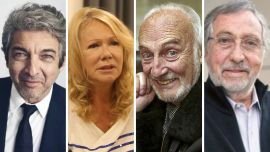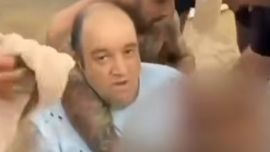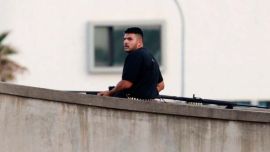The bicentenary of the British Cemetery was marked in style in Chacarita on the day itself last Tuesday delayed by the coronavirus pandemic until almost the year’s end, one might have thought, but no. December 15, 1820 was the exact date when, following a go- ahead from then Buenos Aires Governor Martín Rodríguez, local British merchants headed by James Begg held an assembly to raise funds for the cemetery (if in a different place with a different name), which was up and running just three months later, less than five years after Argentina’s independent existence began.
Despite this week’s pandemic upturn, the open-air ceremony was well attended, in contrast to last month’s discreet Poppy Day at the same venue. Following a bagpipe intro and thanks from British Cemetery President John Hunter to all those coming in these difficult times, the brand-new Anglican Archbishop Brian Williams (Gregory Venables had left the country that same morning) was first in the round of speakers, describing over 20 years of attending funerals and consoling families at the British Cemetery for a wide variety of departed ranging from congregation members to those with a “faith known only to God.”
Hunter then returned to the microphone, describing the origins of the “dissident cemetery” for not only the British but also all American sects, German Lutherans, Jews, freemasons and even atheists from all walks of life were burried there. He praised Governor Rodríguez as a visionary for his initiative, noting that Córdoba had no non-Catholic cemetery until 1864. He then moved on historically to the two world wars with hundreds of names from the almost 900 volunteers from neutral Argentina who lost their lives engraved on a marble wall behind him before thanking cemetery staff (as Williams had also done before him).
Describing Hunter as a hard act to follow, British Ambassador Mark Kent highlighted the importance of a cemetery where the likes of Cecilia Grierson (the medical pioneer portrayed on the upcoming 5,000-peso banknotes) and less famous but exemplary community members lie buried. Kent described the Poppy Day centenary in 2018 when he opened a door in the wall between the British and German cemeteries in a supreme gesture of reconciliation as one of the most moving moments in over four years of his mission, considering the open door a fitting symbol for an immigrant country like Argentina (and like Britain, he added).
The envoy then echoed Hunter’s praise for the Anglo-Argentine volunteers, picking ace pilot Kenneth Charney (the “Black Knight of Malta”) as his example, before turning his attention to the rest of the community. Here the British Hospital in the forefront of the fight against Covid-19 obviously took pride of place but Kent also had kind words for the Royal British Legion, the Argentine-British Community Council, the Salvation Army and even this humble newspaper! Brief words of acknowledgement then followed from María Soledad Rodríguez Iglesias representing the City’s Public Spaces Department while Alejandro Aszenmil read out a letter from City legislator Carolina Estebarena (scheduled to speak but isolated earlier in the day due to a coronavirus contact).
The ceremony concluded with Ambassador Kent, Rodriguez Iglesias and Néstor Soria (representing Cemetery workers) unveiling a bicentennial plaque with Hunter.
A chat with British Cemetery Managing Director Andrew Gibson at the reception following the ceremony supplied some further details – the Chacarita location dates from 1892 (preceded by Socorro and Victoria) and, contrary to common belief, the British and German Cemeteries were always separated until 2018, not just since the two countries went to war – the difference made by world war was that a thick wall replaced the fence and the administrations separated.





















Comments